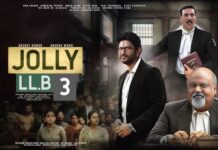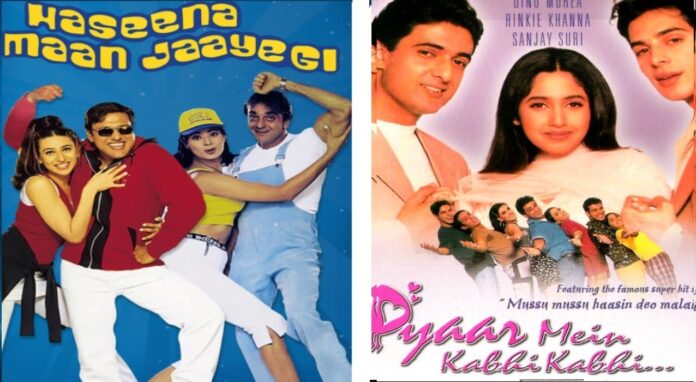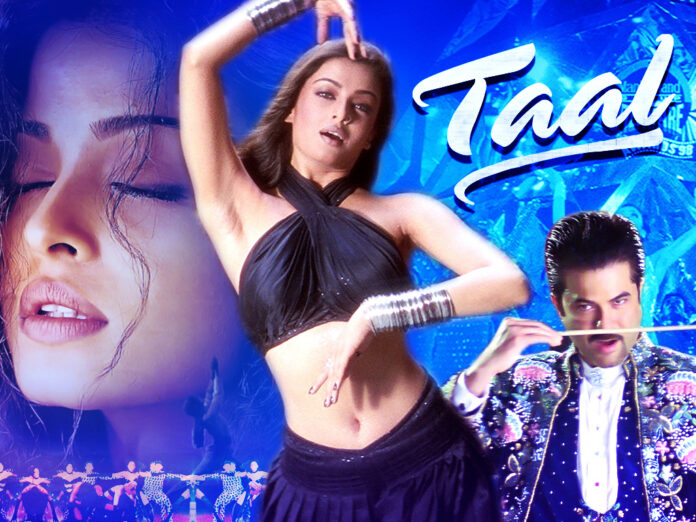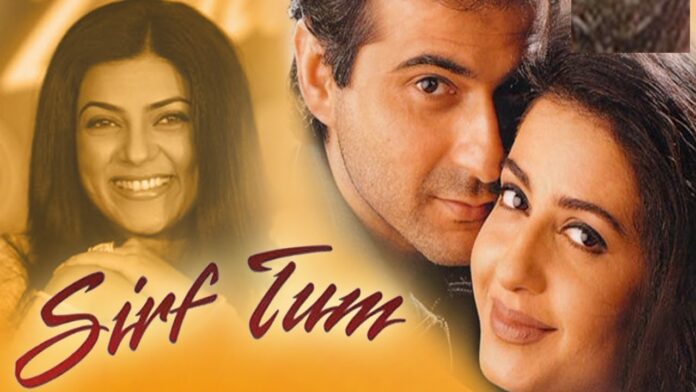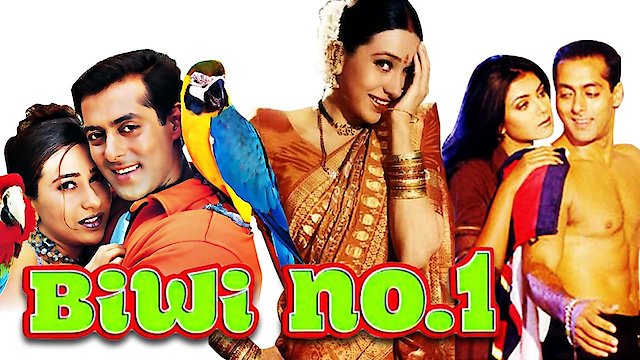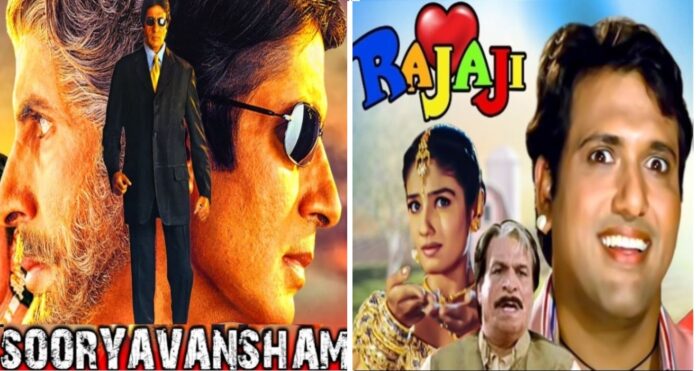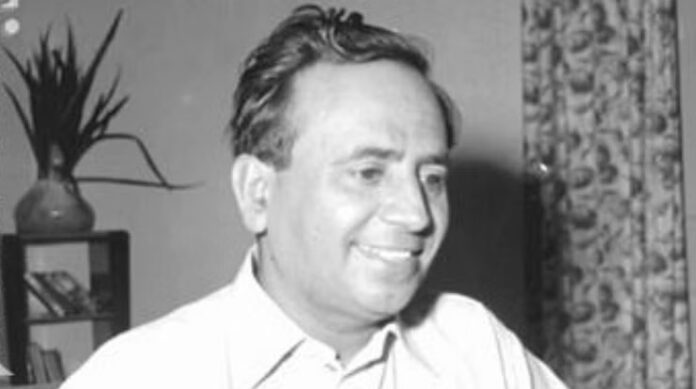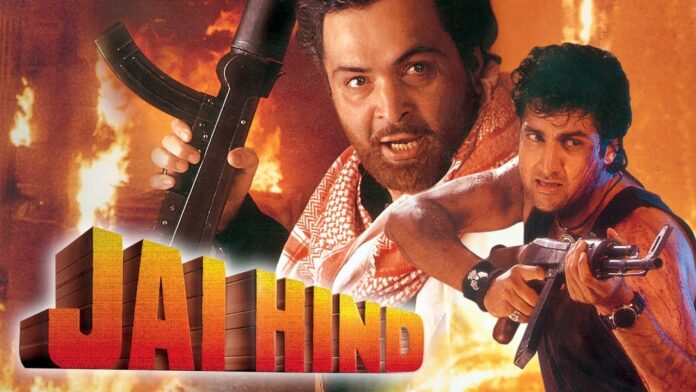LEGENDARY KIDAR SHARMA NO MORE
Veteran writer-producer-director and poet Kidar Sharma passed away on the afternoon of 29th April after a brief illness, at Hinduja Hospital in Bombay. He was 90 and is survived by two sons and a daughter.
The living legend was to receive the Raj Kapoor award on 30th April at a function to be held by the Maharashtra government at the Shanmukhananda Hall in Bombay. It was Kidar Sharma who had discovered Raj Kapoor, besides other yesteryear stars like Madhubala, Geeta Bali, Bharat Bhushan, Mehtab, Mala Sinha and many more.
Among the feature films written and/or directed and/or produced by Kidar Sharma are Devdas, Vidyapati, Sapera, Aulad, Chitralekha (made twice), Arman, Gauri, Kaliyaan, Dhanna Bhagat, Neel Kamal, Suhag Raat, Neki Aur Badi, Theis, Jogan, Bawre Nain, Bedardi, Shokhiyan, Sapna, Gunah, Hamari Yaad Ayegi, Jhanjar, Fariyad, Maikhana, Pehla Kadam, Ashram, Vishkanya, Mumtaz Mahal, Bhanwara, Duniya Ek Sarai and Bheegi Palkein. He also made more than a dozen films for The Children’s Film Society.
He made short films for Doordarshan, including Aise Log Bhi Hote Hain, Kagaz Ki Nao, Ham Honge Kamiyab, etc.
It was an irony of fate that Kidar Sharma never received any government recognition during his lifetime. His other accomplishments include publishing his first book of poetry, entitled ‘Panchhee’, which was even autographed by the greatest Indian poet, Guru Rabindranath Tagore.
The success of Chitralekha led to Chandulal Shah of Ranjit Studios inviting Kidar Sharma to come to Bombay in 1941 and make films for him. Kidar Sharma worked for Ranjit Studios and wrote and directed films with some of the biggest stars of that time, like Motilal and Shamim in Arman, Prithviraj Kapoor in Vishkanya and Gauri (where he cast the unknown Monica Desai opposite him). This film also marked Raj Kapoor’s break as an assistant director. Kidar Sharma also made Mumtaz Mahal with Khursheed and Chandra Mohan, and Bhanwara with K.L. Saigal, Arun Kumar (Govinda’s father), and Chand Chakori, Dhanna Bhagat and Duniya Ek Sarai in which Meena Kumari got her break as a child star.
Finally, he made Jogan for Ranjit Studios, which starred Dilip Kumar and Nargis and is considered an all-time classic even today. Bulo C. Rani really blossomed as a music director in this film.
In 1945, Kidar was chosen for the first film delegation to Hollywood and the U.K., where he met Cecil B. DeMille and Walt Disney and big stars like Gary Cooper and Paulette Goddard. On his return, he also started working as an independent producer-director and signed two complete unknowns as his leading stars, Raj Kapoor (who was working as an assistant to him) and Madhubala who was still a teenager, in a movie called Neel Kamal.
In the late ‘fifties, he was summoned by Pandit Jawaharlal Nehru who heard one of his lyrics and asked him to become director-in-chief of The Children’s Film Society. The first film he made for the society, Jaldeep, won the Venice Film Festival award.
In 1958, he was asked by the international producers, Shaw Brothers of Singapore, to come and direct films for them.
The films that have gone down in history as his all-time classics include Chitralekha, Jogan and Suhag Raat. Chitralekha was remade in the ‘sixties with Meena Kumari, Ashok Kumar and Pradeep Kumar.
As an outstanding poet, he has written most of the songs sung by the great K.L. Saigal, including Balam aeo baso more man mein, Main kya janu kya jadu hai, So ja raj kumari so ja, Dukh kay din ab beetat nahi, Panchhi kahe hot udas, etc. His other memorable songs include Teri duniya mein dil lagta nahin and a song that Madhubala once asked him to dedicate to her before she died: Radha ko na tarsa, shyam puchhtayega.
Kidar Sharma will remain the grand old man and a creative legend of Indian Cinema.
MOHAN GOKHALE DEAD
Character actor Mohan Gokhale died in his sleep on 29th April due to a massive heart attack in Madras. He was in Madras for the shooting of Kamal Haasan’s Hey! Ram.
Mohan was 46 and is survived by his wife, a daughter, parents, a brother and a sister.
A graduate in Arts from Fergusson College in Pune, Mohan started theatre from his school days. He acted in a number of television serials in Marathi (like Shwetambara) and Hindi as well as films in Marathi, Hindi and Gujarati. He was the founder-member of the Theatre Academy in Pune. He had directed actor Nana Patekar’s first play in Marathi, ‘Bhau Murarrao’. Mohan Gokhale shot to fame in the TV serial Mr. Yogi in which he played the title role. He was currently being seen in the serials Zanjeerein, Alpviram and Aashirwad. Among his better-known films are Bhavni Bhavai (Gujarati), Mirch Masala, Holi, Sparsh and Mississippi Masala. He plays Gandhi in Jabbar Patel’s film on Dr. Babasaheb Ambedkar. He had joined the film industry in 1977. He bagged the Maharashtra state government’s best actor award thrice for his roles in different Marathi films.
Mohan Gokhale was cremated in his home town, Pune, on 30th April.
SUDHENDU ROY NO MORE
Veteran art director Sudhendu Roy passed away on 25th April in Bombay. He was 78 and is survived by his wife and four children, one of whom is art director Sharmishtha Roy.
Sudhendu Roy had started his career with New Theatres, Calcutta. He migrated to Bombay in 1953 with Bimal Roy. He worked with such talented filmmakers as Bimal Roy, Hiten Choudhary, Gemini Productions, D. Rama Naidu and Yash Chopra. Among the films for which he had erected sets were Madhumati, Bandini, Sujata, Devdas, Kabuliwala, Biraj Bahu, Ram Aur Shyam, Kala Patthar, Lamhe and Darr. So sought-after was the art director at one time that the industry had to impose a ceiling on the number of assignments he undertook. Sudhendu Roy also directed two films, Saudagar (with Amitabh Bachchan and Nutan) and Uphaar (Jaya Bhaduri). Uphaar was India’s official entry to the Oscars.
Sudhendu Roy had an eye of a cinematographer. His sketches used to incorporate light and shadow in a manner that was almost photographic. He had a knack of visualising realistically and could say exactly how much of the set needed to be exposed. He had had no formal study in art but trained himself to draft and sketch. He was also extremely self-disciplined.
AUDIO CASSETTES SEIZED IN POLICE RAIDS
The police this week raided three premises in Bombay and seized duplicate audio cassettes of T-Series and other companies, inlay cards, a rewinding machine, empty cassette boxes and other property totally valued at Rs. 4,07,300. Two persons were arrested and cases registered against them under sections 51, 52A, 63, 65 and 68-A of the Copyright Act, 1957.
SHAAD SUES PUNJAB GOVERNMENT
Veteran Punjabi film producer, director and writer B.S. Shaad has filed a case in the Punjab high court against the Punjab government for recovery of subsidy amounting to Rs. 12 lakh due to him for his Punjabi film, Laali. It may be recalled that he had on 19th January sent a legal notice to the government, which evoked no response.
Shaad made Laali and also completed due formalities for claiming subsidy from the government. However, the government appeared to be ignoring his claim. Subsequently, he pursued the matter through CHAMPP, IMPPA and FMC, but to no avail. Driven to his wits’ end by the government’s silence on the issue, Shaad filed the case.
RAID ON TOURING TALKIES
A raid conducted recently on Vaibhav Touring Talkies, Alas, district Kolhapur, resulted in the arrest of the cinema owner, Ram Upadhye, for screening Yeshwant illegally. Although the print could not be seized, the owner confessed in his statement to the police that a print of Yeshwant was screened by him illegally for two days. An FIR was filed and the cinema owner was later released on bail. According to him, the print was supplied to him by one Ram Bhosale of Miraj and smuggled from the Karnataka border. The police is investigating the case.
‘BORDER’ DIGI-BETA TAPES STOLEN
Kewal Suri’s Maruti Zen was stolen on 24th April from the crowded Lokhandwala area in Andheri, Bombay. There were three Digi-Beta cassettes of Border in the car, and they too were stolen alongwith the car. Kewal Suri holds the all-India video rights of the film.
CHANDRACHUR SINGH WEDS
Actor Chandrachur Singh got married to Avantika on 27th April in Delhi.
JALIANWALA BAGH AWARD FOR ‘SHAHEED-E-MOHABBAT’
Gurdas Maan and his wife, Manjit, were recently felicitated in London by a local cultural organisation, Jalianwala Bagh (UK), for making Shaheed-E-Mohabbat. Gurdas Maan was presented the best actor award, and Manjit Maan, the best film award for Shaheed-E-Mohabbat.
Gurdas Maan and his group performed stage shows in a number of cities of the UK from 31st March to 21st April.
PRODUCTION NEWS
‘Kohram’ Negative Cutting
The first negative of producer-director Mehul Kumar’s Kohram was cut on April 29 at Adlabs. Dilip Sen Sameer Sen will record the background score from May 12 at Saba Studio. The film stars Amitabh Bachchan, Nana Patekar, Jaya Prada, Tabu, Mukul Dev, Ayesha Julka, Mukesh Rishi and Danny with Jackie Shroff and Kabir Bedi in special appearances. It is scheduled for release in July. Dialogues: Iqbal Durrani. Lyrics: Anand Bakshi & Dev Kohli. Cameraman: Rasool Ellore. Action: Bhiku Verma. Editing: Yusuf Sheikh.
‘Chal Mere Bhai’ Bangalore Spell Complete
An 8-day shooting stint of Neha Arts’ Chal Mere Bhai was completed in Bangalore on April 29. Two songs and scenes were picturised on the entire cast including Sanjay Dutt, Salman Khan, Karisma Kapoor, Dalip Tahhil, Sushma Seth, Shakti Kapoor, Himani Shivpuri, Satish Kaushik, Asrani, Javed Khan, Ghanshyam, Suresh Bhagwat, Shiva, Rajoo Shreshtha and Shahbaaz Khan. The film is being produced by Nitin Manmohan and directed by David Dhawan from a story by Ikram Akhtar and screenplay written jointly by Ikram Akhtar and Yunus Sejawal. Dialogues: Rumi Jafri. Music: Anand Milind. Lyrics: Sameer. Cinematography: Harmeet Singh. Choreography: Ganesh Acharya. Art: R. Verman. Editor: A. Muthu. Gaurav Digital presents the film.
‘Hadh Kardi Aapne’ 10-Day Spell In America
The final 10-day shooting spell of R.R. Productions’ Hadh Kardi Aapne will commence on May 8 in America. The film, being produced by Rajeev Anand and Rakesh Malhotra and directed by Manoj Agrawal, stars Govinda, Rani Mukerji, Nirmal Pandey, Ritu Shivpuri, Helen Brodie, Paresh Rawal, Satish Kaushik, Johny Lever (in a double role), Avtar Gill, Tanaaz Currim, Navneet Nishan, Himani Shivpuri, Smita Jaykar, newcomer Kanchi Kaul and Tinnu Anand. Story-screenplay: Satish Jain. Dialogues: Aadesh K. Arjun. Music: Anand Raaj Anand. Lyrics: Anand Bakshi.
‘Haseena Maan Jayegi’ Shooting, Dubbing Complete
The entire shooting and dubbing of Rahul Productions’ Haseena Maan Jayegi are complete. Recording of background music will commence on May 6. Produced by Smita Thackeray and directed by David Dhawan, the film stars Sanjay Dutt, Govinda, Karisma Kapoor, Pooja Batra, Aroona Irani, Paresh Rawal, Kader Khan, Satish Kaushik, Mohan Joshi, Aasif Sheikh and Anupam Kher with Bindu and Asrani in guest roles. Story-screenplay: Yunus Sejawal and Imtiaz Patel. Dialogues: Rumi Jafri. Music: Anu Malik. Lyrics: Sameer. Cinematography: K.S. Prakash Rao. Editor: A. Muthu. Action: Mahendra Verma. Choreographer: Ganesh and B.H. Tharun Kumar. Bharat Shah presents the film.
‘Pyaar Diwana Hota Hai’ Major Schedule Complete
Super Good Films’ Pyaar Diwana Hota Hai was shot in a 23-day stint till April 23 at Ramoji Rao Studios, Annapurna Studios and on locales in Hyderabad. Govinda, Rani Mukerji, Apoorva Agnihotri, Deepak Tijori, Farida Jalal, Kishore Bhanushali, Pramod Moutho and Om Puri participated. The film, which is almost complete, is being produced by R.B. Choudhary and directed by Kirti Kumar. Story: Sasi. Screenplay: S.M. Ahale. Dialogues: Javed Siddiqi. Lyrics: Anand Bakshi. Music: Uttam Singh. Art: Gappa Chakraborty. Cinematography: Peter Pereira. Dances: Ganesh, Raju Sundaram and Chinni Prakash. Balram Sharma is the film’s co-producer.
YOU ASKED IT
Will the entry of foreign production companies, in Bollywood augur well for us?
– Their entry may well change the face of Bollywood in the years to come.
What do you think of the producers who will release their star-cast films while the World Cup cricket matches are on?
– These producers had to choose between getting their films in opposition of other big films or cricket matches. They opted for the latter. A lot depends on how the matches progress.
Among producers, distributors and exhibitors, who, according to you, are the most harassed lot?
– The producers, because there’s no unity in the production sector. Everybody seems to be taking the producer for a ride and, in the absence of a strong trade association of producers (thanks only to lack of unity), the producer has to bear with all the tantrums and humiliation.
Will the concept of multiplexes succeed in a city like Jaipur?
– It will succeed wherever people have spending power, and Jaipur is no exception.
3-E
Education-Entertainment-Enlightenment
Power Of Good Music
The opening of Sarfarosh in several circuits took the industry by surprise. It is a commonly known fact that Aamir Khan acts in a very limited number of films. This, coupled with the film’s publicity, had raised hopes in the trade that the film may open well. Besides, the film was the solo major release of this week, implying thereby that it did not have to vie for public attention. And it is vacation time in many parts of the country. But despite all these points in favour of Sarfarosh, the film opened to ordinary houses in circuits like C.I., East Punjab and Rajasthan. The reason: the film does not have popular music. Which gets us to the important role music today plays in ensuring a good initial. Like it had happened in the case of Shah Rukh Khan’s Duplicate, it has once again happened with Sarfarosh. Even Duplicate took a decent opening only in Bombay but in the rest of the country, the initial was far from encouraging. This, because its music was not up to the mark although it was definitely better than the music of Sarfarosh.
Dancing Surprise
Trust Boney Kapoor to spring surprises. After having got melody queen Lata Mangeshkar to make a cameo appearance in his Pukaar, Boney is at it again. This time over, he has roped in Prabhu Deva for a dance item for Pukaar. Initially, the song was planned to be picturised on Madhuri Dixit and a robot. No sooner did Prabhu Deva happen to hear A.R. Rahman’s composition, he, of his own accord, expressed a desire to choreograph the song. While Boney and director Rajkumar Santoshi were only too happy with Prabhu’s keenness, they went a step ahead and asked him not only to choreograph the number but also dance alongwith Madhuri for it. So the robot is out and Prabhu Deva is in. Rehearsals have begun in right earnest in Madras, and shooting may commence next week on several sets being erected for the song picturisation in Hyderabad. But what is it that prompted Prabhu to make a special appearance for the song. Well, wait till you hear the song. Que sera sera sera (a well-known Latin phrase) goes the song and is it good? No, it’s too good!
Manoj Kumar: Analysing Failure
It requires guts to admit one’s failure and Manoj Kumar is a gutsy man. Not only does the maker of many a hit concede that his latest, Jai Hind, has not fared well, but he has also analysed the reason for the audience rejecting the film. Jai Hind was started more than five years ago and the delays in completing the film seem to have taken their toll on the project. “When Jai Hind was launched, the Kashmir issue affected every Indian, but the problem had been solved by the time the film hit the screens,” reasons Manoj Kumar. “My well-wishers did caution me to scrap the film when artistes like Manisha Koirala started troubling me for dates and when the Kashmir problem got solved in the meantime. But I refused to do so as it was a question of the reputation of my banner. I’ve learnt a lesson from the failure of Jai Hind — never make a film on a temporary problem because if the problem is no longer there, the audience will not feel for the project. You can’t serve dry fruits in summer. You want fresh fruits. Even paneer masala or chicken moghlai will be abhorred by people if they are stale, but simple dal, if fresh, will be relished,” says Manoj Kumar. Very true, Manoj-ji.
Diaries For Sale
Producer Vashu Bhagnani seems to get better and better with each of his films. Take for instance, his novel publicity idea for his forthcoming Biwi No. 1. He has had a large number of Biwi No. 1 diaries made (a cheaper version of the one which we wrote about a few weeks back) to be sold to the patrons inside main cinemas in main cities of every circuit. In fact, he is currently busy setting up the stalls to sell these diaries at various places all over India. The diary, containing eye-catching pictures and autographs of the Biwi No. 1 team, is priced at Rs. 125 and should be a good buy for avid cinegoers, except that the price is a bit on the higher side. “Actually, Rs. 125 is itself the cost price of the diary for me”, explains Vashu. “The objective behind selling the diaries is not to make money, but to create awareness about my film as well as give the patrons something of sentimental value.”
The Slap That Echoed Far, The Slap That Launched A Star
As legendary director Kidar Sharma departs to meet his Maker this week, let us savour an interesting memory that truly brings out the character of the man. The incident dates back to the ‘forties when a young Raj Kapoor was still a fortune-hunter in the film world and was working with director Kidar Sharma as his assistant. Raj Kapoor’s main responsibility at that time was to sound the clapper-board before every shot. Raj, who even then was fixed on the idea of becoming an actor, would invariably try to push his face in front of the camera for a few seconds before sounding the clapper-board. Once, it so happened that Raj was, as usual, preoccupied with himself in front of the camera, so much so that when he sounded the clapper-board, the false beard of the performing artiste got stuck in it and came off. The very next moment, the entire crew was in peals of laughter. Kidar Sharma, being the short-tempered man he was, walked straight up to Raj Kapoor and gave him a resounding slap on his cheek. Everyone in the unit was aghast. After all, Raj was the son of one of the foremost stage and film actors of India. However, the incident served as a blessing in disguise for Raj’s acting career which was yet to take off. For, Kidar Sharma was so impressed with the pain he saw in Raj’s eyes after being slapped that he instantly made up his mind to bring him in front of the camera. And soon enough, he began Neel Kamal (1948) with Raj Kapoor in the lead. The rest, as they say, is history.
INFORMATION MEETS
“People tell me, ‘Vashu, you are a very blunt businessman’. But, let me tell you that I am a very sentimental person. If someone speaks ill of me,
it hurts me a lot.”
– VASHU BHAGNANI
RAJ VAIDYA
He is arguably one of the most successful producers on the scene today. Having switched vocations barely half a decade ago, he scored an instant hit with his debut production project, Coolie No. 1. Just four films later, he is in a position to demand what he terms as ‘munh-maanga daam’ for his multi-starrer, Biwi No. 1. Yet, Vashu Bhagnani appears far from being flattered, and he doesn’t even get carried away with the industry’s growing expectations from him. In fact, he has decided to keep the film for many of the circuits with himself. He says, he is willing to take the risk more because ‘I don’t want to lose people today’ (in case the film flops) than for any business considerations.
We caught up with Vashu Bhagnani on a typically hectic day at his office. Biwi No. 1 is close to releasing, and its publicity materials and promotional trailers are in the process of being despatched to the various distributors. Amidst the flurry of activities, Vashu spent time with us and shared with us his thoughts on relationships in the industry, his disappointments and his astute business sense.
You have a 100% successful track-record, which could be both, a blessing (as it means that it is the distributors who run after you to buy your films and not vice versa) or constant pressure of having to live up to everyone’s expectations. How do you look at it?
Actually, it is both. If the expectations grow with every film you make, then it will also drive you to achieve higher and higher every time, isn’t it? I started with Coolie No. 1 and then went on to make Hero No. 1, Pyaar Kiya To Darna Kya, Bade Miyan Chote Miyan and now, Biwi No. 1. With each of my films, I have gone better than the previous. People say that BMCM didn’t do very well, but I would beg to differ. Businesswise, it was better than PKTDK. (Perhaps, Vashu is not taking into account the prices of the two films while comparing them.) Anyway, the point is, I have grown commensurately with the rise in people’s expectations in my abilities as a producer. Of course, a time may come when I may feel that a certain film of mine hasn’t been up to my usual standards. But then, I will be forthright about it rather than bluff the audience into believing that it is as big as say, Biwi No. 1. I’ll tell them through the media, ‘Look, even though this is my film, it isn’t Biwi No. 1. It is a good film, nevertheless, and do see it. But please don’t come to the cinema expecting it to be a Biwi No. 1 or BMCM or whatever’. Luckily, this hasn’t happened so far.
Making a bigger film than my previous one has never been a criterion whenever I have embarked on a project. I basically look for a good plot and for good artistes who would be perfect for it. I would never do something like signing, say, Shah Rukh Khan just to increase the business prospects of a plot ideally suited for, say, Govinda. I will only take those who fit the requirement of the plot. I don’t want to cheat my audience. I have laboured to create my place among the audience, which I don’t want to lose overnight. It has taken me six long years to get here and I don’t want to lose it all in a day’s time. I have seen people in this very industry, who have not achieved success even after decades. Fortunately, I have tasted only success ever since I have entered the industry. I firmly believe that this has been possible solely because of some divine grace. I don’t want to lose this opportunity by being ungrateful. I don’t want to exploit people. Yes, it is possible that I could get whatever price I want by going around telling people how much I have spent on my film. But I do not want that kind of money. In fact, I am releasing Biwi No. 1 myself in almost 60% of the territories. It doesn’t matter to me if I get less money that way.
But isn’t there a huge risk involved in it? After all and with due respect to your track-record, no one is infallible….
But that’s precisely my point. I don’t want to exploit anyone, like I said earlier. If the film works with the masses, the money will naturally follow. But if it doesn’t, I don’t want to lose my distributors by giving them big talks and extracting an exorbitant price from them. Another reason why I have turned down distributors for Biwi No. 1 is the fact that my expectation from the film is much greater than theirs. Their price can never match mine because I know exactly how much money I have spent on the film. Supposing our prices matched, even then, it is said that bahut zyada price lena bhi bura lagta hai. Today, the film is complete and the hype surrounding it is making a lot of distributors approach me. I am getting more offers than I need, but I am turning them down. This is simply because, if the film flops, no matter who loses money, ultimately, it would be I who would get bad-dua. I do not want to lose people today.
And yet, when a number of distributors approached you for Gujarat-Saurashtra, you quoted them fantastic prices and terms. Why?
That is true. Kyon ki ya to mujhe bahut bada paisa chaahiye ya kuchh bhi nahin. Either I take a lot or I don’t take anything at all. But when I take, people should say ki Vashu ne kya paise liye! Or, that he asked for so much that nobody was willing to give him. I am willing to accept both.
That is all very well but couldn’t the current trend among distributors, to shirk from paying overflows, be the real reason behind your decision of keeping the film with yourself?
No, no. That’s not the reason. It isn’t what I am talking about. What you are saying is the business aspect of it. As a businessman, you are free to choose something if it suits you and reject what doesn’t. What I am talking about is interpersonal relationships. I don’t care for anyone when it comes to business. No one at all. Yet, it is also true that I have always put relations over and above business.
Talking of relations, you seem to have a very good working relationship with director David Dhawan. Barring PKTDK, all your films have been directed by him.
Firstly, David-ji ke saath mere ghar ke relations hai. I have always thought of him as an elder brother. I had already made Coolie No. 1 and Hero No. 1 with him, when he began working on BMCM for another producer. But some time through the project, circumstances developed in such a way that I had to enter the project. As far as Biwi No. 1 is concerned, I had selected the subject myself after seeing a film (Sati Leelavathi in Tamil) in Madras, three years ago. I came back to Bombay and told David about it. I also gave him a VHS of the film and suggested that he remade it. When he saw the film, je hust loved it and asked me if I would produce the remake. So I went and bought the rights of the original. Then we spent a lot of time working on the script and deciding who fits perfectly in which role. Eventually, we launched the film.
David and I have spent so much time working together that we share an excellent rapport. After all, we have made four films together, and if each film has taken about 90 days to make, it simply means that we’ve had meals together for 360 days. Ab jis ke saath insaan 360 din namak khaayega, woh dost toh ban hi jaayega, na!
To change tracks, isn’t it sheer bravado that you have decided to release BIWI NO. 1 thick in the middle of the Cricket World Cup?
You could say that but then, you couldn’t be any farther from the truth. Let me explain. Firstly, whenever I release the film, be it two weeks from now or after the World Cup, someone from the industry will lose some money if his film is competing against mine. Why should I do that? Why should I bite the very hand that has not only fed me but has also given me so much more? I’d rather take away from another industry that either the film industry or I are not concerned with. Hum log aapas mein industry ko kyon divide karein?
Secondly, I feel, this whole talk of the World Cup majorly affecting movie collections is a myth. As per my calculations, the maximum it could affect is by 10-20%. You may think, I’m being unduly optimistic, but let me tell you that if you print my calculation in your issue, I’m sure that it will receive many replies. I am ready to change my name if it doesn’t. It goes like this — we run films in 4 shows daily. Since the World Cup matches will begin only at 3.15 p.m., the 12 o’clock show will remain unaffected. The 3 p.m. and 6 p.m. shows will, of course, be affected. The 9 p.m. show, contrary to popular belief, will not be affected. Let me explain how. Even though the matches will officially end at 9.15 p.m., sometimes, the matches may end earlier than that, or the interest in the match may be over before its end. So, all in all, a maximum of two shows will be affected, that too only on the days of the matches. And to what extent? Let’s say, 20%. Even then, the tally at the end of the day will still read: 12 noon show – 100%; 3 p.m. – 80%; 6 p.m. – 80%; and 9 p.m. – 100%. Average collectoins for a day will still read 90%. And if I am scoring 90% on a match-day, then I am definitely a winner. This, when I am not even taking into account the fact that not all the matches in the World Cup are going to generate an equal amount of interest. I could lose much more if my film were to be pitted against another. But since no other major films are releasing during the World Cup, my film will get a clear field for three straight weeks. This should prove advantageous to it, don’t you think?
And finally, if the World Cup boasts of many a good team, even I can say that I have an excellent team. I mean, what would you call a combination of Salman Khan, Anil Kapoor, Saif Ali Khan, Karisma Kapoor, Tabu, Sushmita Sen, David Dhawan, Anu Malik and the title value of Biwi No. 1?
Coming to one of your most-known passions — publicity. How much importance do you give to publicity?
You have rightly termed it as ‘passion’, I strongly believe that koi bhi kaam karne ke liye shauq hona chaahiye. I am constantly thinking of ways of doing things better and better. I don’t like to compromise on anything that is within my powers. Maine kabhi apne aap se dhokha nahin kiya. Sometimes, when I go abroad and see the way things are publicised, I realise that there are so many things that I haven’t done yet. I see the ads everywhere, in papers, on TV, etc., and there are so many ideas that I would like to incorporate in my publicities, for example, I would love to do something on the lines of the Liril ad, but often, my budget doesn’t allow me to. So, I do the maximum I can under the circumstances. For example, today, a particular poster of Biwi No. 1 costs me Rs. 35,000, which means about 40 such posters would set me back by approximately Rs. 10 to 15 lakh. This is a big sum in today’s times, but I spend it because I am trying to derive creative satisfaction out of my work. Otherwise, you could make 10,000 or even a lakh posters in Rs. 15 lakh. Par uss mein phir woh satisfaction waali baat nahin hogi.
Similarly, as a producer, I hold nothing back every time I make a film. I cannot direct, so I don’t waste my time interfering with that. Whatever creative input I can add, which is within my mental capacity and powers, I do. I am constantly striving to stretch my abilities and that only happens because I am extremely passionate about my work.
Five films in six years. What has the experience been like?
To tell you the truth, right now, I am very confused. Mera dil karta hai ki mujhe ab zyada din industry mein rehna hi nahin hai. I just can’t understand the way people deal here. I can swear that I have never ever worked with anyone with a malafide intention and yet, I hear a lot of people spreading all kinds of lies about me. I have failed to understand who to trust and who not to. I have no other interests, besides my work and my family. I just happen to love my business and dealing with people, and my family. So, I get hurt quickly when I hear that someone has spoken rubbish about me. I am the kind of person who starts loving someone even if I have had a single meal with him. So, I feel I do not deserve this.
People tell me, ‘Vashu, you are a very blunt businessman.’ But let me tell you that I am a very sentimental person. If someone speaks ill of me, it hurts me a lot, but I prefer not to talk about it. Instead, I ask myself why the person did so. Like I said earlier, I have always put relationships over and above film business. That’s why a loss in business never affects me as much as a breach of faith does.
I have never cheated anyone. I don’t ever bargain. My friends tell me, ‘Vashu, now that you have become a big producer, you should not pay your stars so much.’ But I don’t agree. Why should I agree? Today, it is because of the stars that I’m selling my film. Vashu Bhagnani cannot sell. I sell because I have a Salman or an Anil or such. Eventually, it is the product that sells. So, I turn back to my friends and ask, ‘Agar Vashu Bhagnani chalta hai toh woh kisi bhi aire gaire ko hero lekar film hit kar ke dikhaaye.’ They cannot reply to that.
SHOWBIZ TODAY
THE MAKING OF A MULTIPLEX
Maharashtra Government Approves G2000 In Pune
KOMAL NAHTA & RAJ VAIDYA
The word is finally out. The Maharashtra government has very recently given a nod to the construction of multiplexes in the state. It may be recalled that a couple of years ago, the state government had negotiated a proposal for multiplexes with the US-based Warner Bros. However, nothing came of it and the proposal was scrapped after a few meetings between the two parties. Sources say that that may have been due to the inability of the Warner officials to cope with the tremendous amount of red tapism involved in interacting with the government. Be that as it may, the government policy on multiplexes remained on ice thereafter. Until now, that is.
In its first-ever policy decision on the subject, the Maharashtra government has approved a proposal for an entertainment complex which also includes a multiplex, to come up in Pune soon. The government has broadly defined its tourism policy (multiplexes have been made a part of the tourism industry) and paved the way for future multiplexes in the state by providing a number of incentives for projects of the same nature.
The construction work of the abovementioned complex, G2000, is already under way in Pune. When completed, it will have a business hotel, a cultural centre, an exhibition hall, bowling alleys, a video games parlour, restaurants and so on, apart from a multiplex comprising four screens.
We met the brain behind the project, Hemant Manmohan (brother of producer Nitin Manmohan), to find out more about the venture, the government policy and the future of multiplexes in India. For, when the history of multiplexes in India is written, the name of Hemant Manmohan shall be written in golden letters.
Firstly, how did the idea of setting up a multiplex come to you?
In my opinion, multiplexes will become the order of the day very soon. Today, several small cinema halls that have come up in Bombay, have brought back the audience to cinemas. The bottom line is to provide quality service — good projection and sound, comfortable seating and a few other value-additions — which is what has made these cinemas viable recreational spots for people. However, increasing costs, taxes and other difficulties prevent most other cinemas from providing facilities of a similar standard. But imagine a cinema complex with a number of screens under a single roof and decidedly smaller seating capacities — that becomes a viable proposal for both, people and the trade.
That’s true. But, why Pune and not Bombay?
I believe that Pune has tremendous potential to generate tourist traffic. Being an industrial city, it continues to attract a large number of people from all parts of India. These people have nearly the same spending power as those in Bombay. I have a number of business interests in Pune and constantly shuttle between Bombay and Pune. I have personally known of a number of business ventures that have succeeded in Pune despite the skeptical view about the spending power of Puneites. Take the case of Domino’s Pizza. They run 17 parlours in Pune and, at any given time, the waiting period at these parlours is two hours! Having been convinced so, I hired a marketing company to do a survey to ascertain the viability of my project and, as expected, the findings were favourable.
Another reason in choosing Pune over Bombay was that I already had a plot of land on prime location there. Years ago, I had bought it with the intention of setting up a business hotel on it. Due to certain reasons, that project hadn’t taken off and I was looking to using it in some way. So, when the survey results reiterated my instincts, I quickly got the project report of the venture made, and applied to the Tourism Finance Corporation Ltd. for finance. They approved my application and I began the construction work.
Even before getting an approval from the government? That is surely putting the cart before the horse…
…You can say that, but the truth is that I was always convinced of the viability of the project. Likewise, I was also sure of getting the government to approve it. You see, even though I didn’t have a formal approval from the ministry, I had won the support of a few dynamic bureaucrats therein. They had given me to understand that they were looking at the proposal in a very positive manner. That was enough for me to begin work.
And how did the final approval come about?
Oh, that was a long process. I had applied for the permission to set up an entertainment complex way back in August ’98. My earlier experiences had proved to me that whenever one approached the government with a proposal for a cinema hall, one had to face a lot of negative attitude from the people concerned. Since my project was much more than a cinema complex alone, I decided to approach the tourism ministry. Sadly, when I first applied, there was no clear state policy on tourism. So, I went to Gujarat, which had a fairly decent tourism policy, especially in regards to development of entertainment complexes. I gathered all details of the policy and presented it to the Maharashtra tourism ministry. Slowly, I could see that the people concerned were beginning to see sense in what I was proposing. I must add here that I particularly paid attention to the paperwork throughout the process, which must have gone in my favour. My proposal was approved over similar ones submitted by two big groups in the field.
Can you briefly describe the complex?
Sure. The complex will be called G2000 and will have several levels, each devoted to a specific purpose. The main features of G2000 are a cineplex with four screens and a total seating capacity of more than 1,400; a business hotel with 64 suites, which will be managed by the Taj Group; a cultural centre consisting of an exhibition hall; a rooftop auditorium which can be used to stage plays as well as screen films; bowling alleys; a video game parlour; a MacDonald’s outlet; a 2-level underground parking lot, and so on. We plan to have G2000 in operation by April next year.
MAHARASHTRA GOVT.’S POLICY FOR CINEMA MULTIPLEXES
The Maharashtra government has announced the policy for cinema multiplexes valid all over Maharashtra including Bombay city. The policy for multiplexes is actually a part of the Tourism Policy announced to coincide with the Year of Tourism. The Tourism Policy has four components of which the third component relates to the package for multiplexes.
Excerpts from the policy:
“The multiplexes will have criterion for minimum number of screens for Bombay city and outside Bombay, and can have tourism related amenities within the multiplexes.
“The multiplexes shall be eligible for exemption from entertainment duty for a period of 4-5 years. They will also be entitled to stamp duty relief if they are located outside the municipal limits.
“For the projects of Indian entrepreneurs, joint venture projects and 100% projects of foreign companies, there shall be different norms within the multiplex policy.
“The cinema houses in the multiplexes will be exempted from sales and purchase tax for the cinematographic equipment purchased by them.
“Existing cinema houses can also convert into multiplexes under the policy.”
The Tourism Policy shall be implemented by a single-window clearance system.






